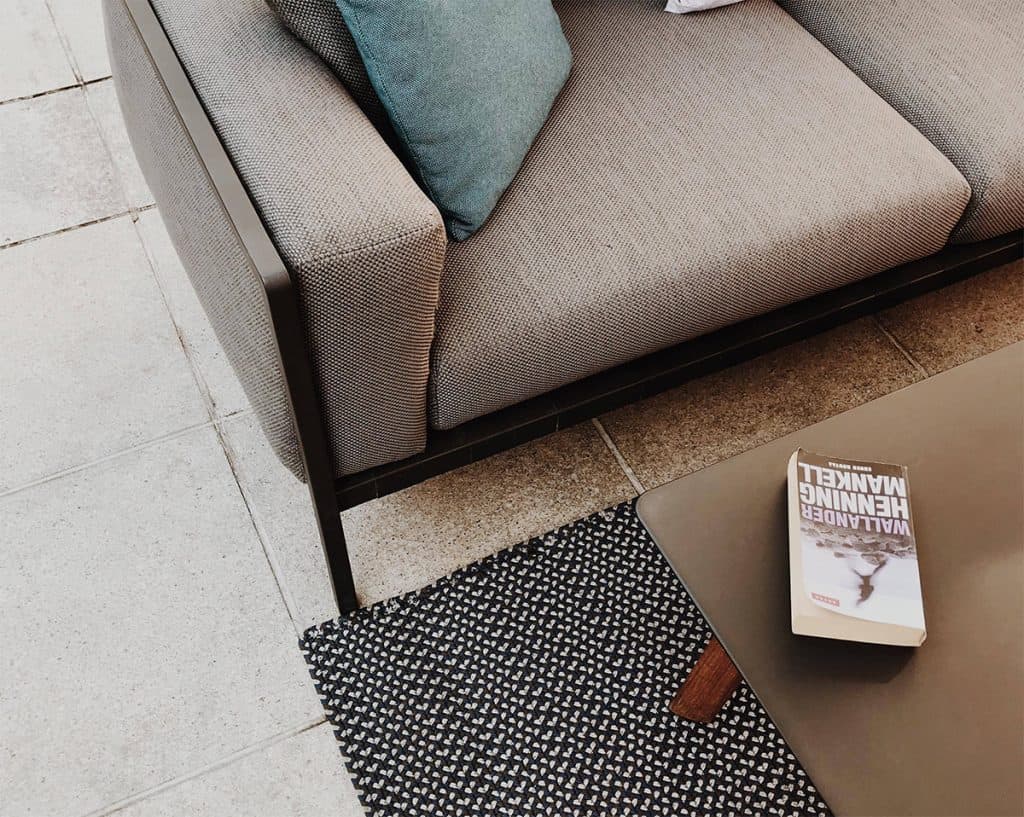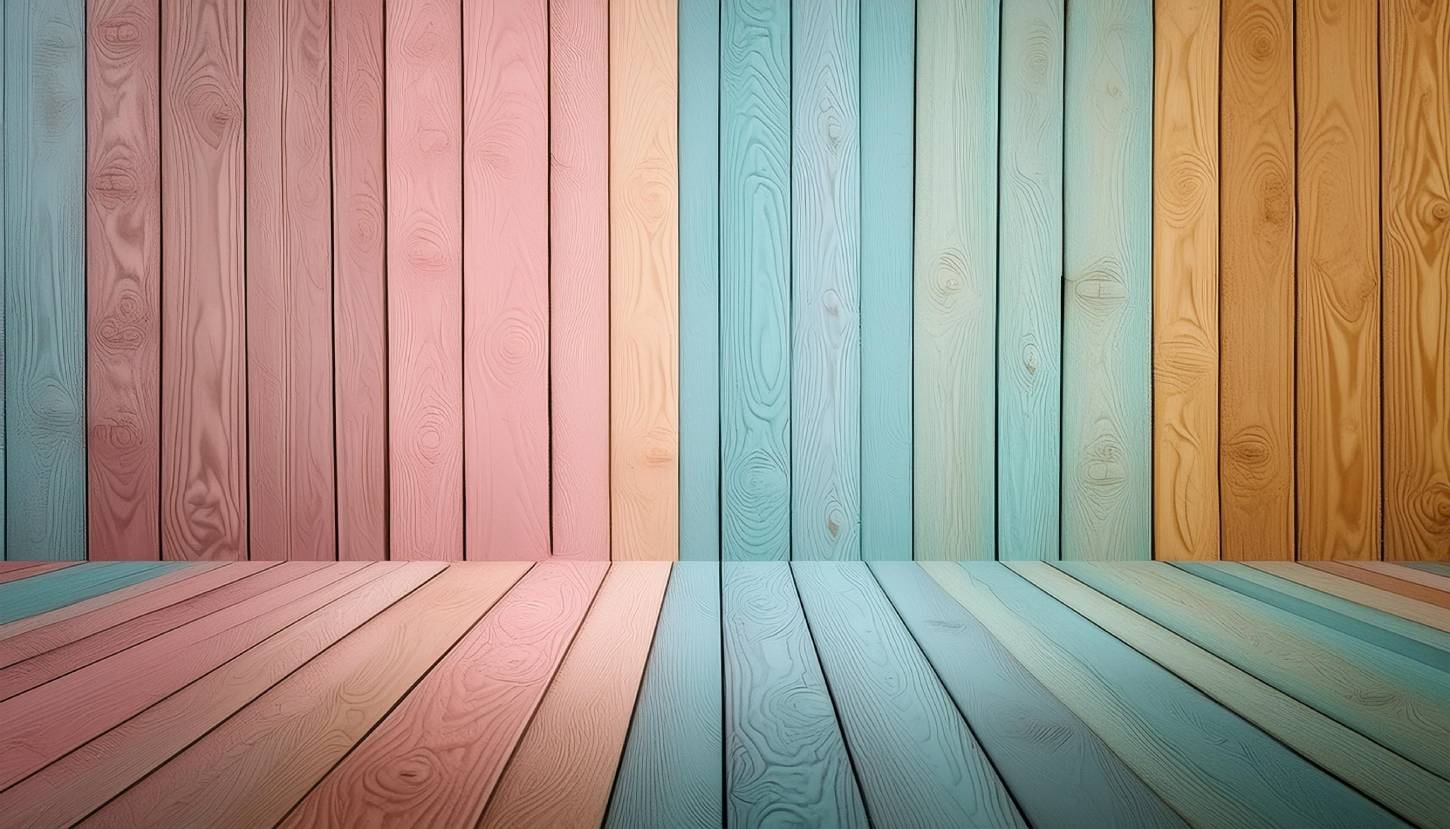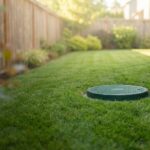Choosing the right flooring for your home can be a game-changer. Whether you’re looking to enhance the look of your living room, add comfort to your bedroom, or increase durability in high-traffic areas, the right flooring makes all the difference. With so many options out there, it can feel overwhelming—like, where do you even start?
Don’t worry, we’ve got you covered! In this guide, we’ll break down everything you need to know to pick the perfect floor for every room in your house.
From understanding your unique needs to exploring the best materials and styles, we’ll provide valuable tips and insights to make the decision process not just easier, but even a little fun. Let’s conquer that flooring project together!
Understanding Your Flooring Needs
Identify High-Traffic Areas
First things first, let’s talk about those high-traffic areas in your home. You know, the places that get the most foot traffic day in and day out—like entryways, hallways, and kitchens. These areas demand durable flooring that can withstand the hustle and bustle without showing wear and tear too quickly.
For high-traffic zones, materials like hardwood, tile, or laminate are great choices. Hardwood offers timeless beauty and can handle a lot of activity, though it might need refinishing over time. The tile is incredibly durable and resistant to scratches and stains, making it perfect for busy spaces. Laminate is another solid option; it’s both tough and budget-friendly, giving you the look of wood without the maintenance.
Consider Comfort
Now, let’s talk comfort. When it comes to cozying up your bedrooms and living rooms, softer, more comfortable flooring options are the way to go. Imagine sinking your feet into a plush carpet as you step out of bed in the morning—that’s the kind of comfort we’re aiming for.
Carpet is an obvious choice for these areas, providing warmth and a cushioned feel underfoot. Plus, it acts as a sound insulator, making your home quieter and more peaceful. But if you’re not a fan of carpet, consider cork flooring. It’s softer than hardwood and provides a unique, springy feel, making it an excellent alternative for places where you want extra comfort.
Moisture Levels
Last but definitely not least, let’s discuss moisture-prone areas like bathrooms, basements, and laundry rooms. These spaces require flooring that won’t warp, swell, or become a breeding ground for mold when exposed to moisture.
Tile is the go-to choice for these areas. It’s water-resistant, easy to clean, and comes in a variety of styles to suit any decor. Vinyl flooring is another stellar pick—it’s waterproof, resilient, and available in both planks and sheets, offering versatility in design. For basements, consider engineered wood, which has a plywood base that resists moisture better than traditional hardwood.
So, there you have it! By understanding the specific needs of each room in your home, you can make more informed decisions and find the perfect flooring that combines durability, comfort, and moisture resistance.
What’s your biggest challenge when it comes to choosing flooring? Let us know in the comments!
Popular Flooring Options
Hardwood
Hardwood flooring is a classic choice that never goes out of style. Let’s break down the pros, cons, and best rooms for this timeless option.
Pros:
- Aesthetics: Hardwood floors add a touch of elegance and warmth to any room. Their natural beauty and unique grain patterns make each plank one-of-a-kind.
- Longevity: With proper care, hardwood floors can last for decades. You can even refinish them multiple times to restore their original beauty.
- Easy to Clean: A quick sweep or vacuum and occasional mopping are all it takes to keep hardwood floors looking pristine. Plus, they don’t trap allergens like carpet does.
Cons:
- Cost: Quality hardwood flooring can be pricey, both in terms of materials and installation.
- Susceptibility to Water Damage: Hardwood isn’t the best choice for areas prone to moisture, as water can cause it to warp or stain.
Best Rooms:
- Living Rooms: Hardwood adds a sophisticated touch to living spaces, making them feel inviting and stylish.
- Bedrooms: The warmth and comfort of hardwood are perfect for creating a cozy bedroom retreat.
- Dining Areas: Hardwood’s durability makes it an excellent choice for dining rooms, where spills and heavy foot traffic are common.
What do you think about hardwood flooring for your home? Have you used it before, or is it on your wish list? Share your thoughts in the comments!
Laminate
Laminate flooring is an attractive and budget-friendly option that offers a lot of benefits without breaking the bank.
Pros:
- Cost-effective: Laminate is typically less expensive than hardwood, making it a great choice for those looking to achieve the wood look without the hefty price tag.
- Easy Installation: Many laminate floors come with a click-lock installation system, allowing for a simple and quick setup process, which is perfect for DIY enthusiasts.
- Durable: Laminate is resistant to scratches, dents, and fading, making it an excellent choice for homes with pets or high foot traffic.
Cons:
- Can be Slippery: Some laminate surfaces can be slick, especially when wet, which might be a consideration for families with young children or elderly members.
- May Not Look as High-End as Real Wood: While laminate can mimic the appearance of wood, it may lack that genuine feel and depth that authentic hardwood provides.
Best Rooms:
- Living Rooms: The durability and style of laminate make it a practical choice for creating a welcoming living space.
- Bedrooms: With its comfort underfoot and range of designs, laminate can help set a cozy atmosphere in the bedroom.
- Hallways: Laminate can withstand heavy foot traffic, making it ideal for hallways that see constant movement.
Have you considered laminate for any of these spaces? We’d love to hear about your experiences!
Carpet
Carpet is a beloved choice for many because of its inviting qualities, making spaces feel warm and welcoming.
Pros:
- Comfort: The plush texture of the carpet creates a soft and cushioned surface, perfect for bare feet and long hours spent at home.
- Warmth: The carpet helps to retain heat, providing a cozy feel during those chilly months.
- Sound Insulation: One of the standout features of carpet is its ability to absorb sound, which contributes to a quieter, more peaceful environment.
Cons:
- Stains Easily: Unfortunately, carpets can be prone to stains, especially in high-traffic areas or homes with pets and children.
- Requires Regular Cleaning: To keep carpets looking their best, they need regular vacuuming and occasional deep cleaning, which can be a bit of a commitment.
Best Rooms:
- Bedrooms: The comfort of the carpet makes it ideal for bedrooms, creating a snug and restful space.
- Living Rooms: A carpeted living room offers a warm, inviting atmosphere, perfect for gatherings with family and friends.
- Home Offices: In home offices, carpet provides a softer feel underfoot, making those long workdays more comfortable.
What’s your take on the carpet? Have you found it to be a good fit for your home? Share your thoughts!
Tile
Tile flooring is a versatile and practical option that brings both style and functionality to your home.
Pros:
- Water-resistant: One of the standout features of tile is its impressive ability to resist moisture, making it a fantastic choice for areas that are prone to spills and humidity.
- Durable: The tile is highly durable and can withstand heavy foot traffic, making it ideal for busy households. With proper care, it can last for many years without showing significant wear and tear.
- Easy to Clean: A quick sweep or mop is usually all it takes to keep tile floors looking fresh and clean, making maintenance a breeze.
Cons:
- Cold Underfoot: Tile can feel chilly, especially in cooler months, which might not be the most comforting sensation for bare feet.
- Can Crack: While durable, tile is hard and can crack if heavy items are dropped, so it’s something to keep in mind for homes with kids or pets.
Best Rooms:
- Bathrooms: The water-resistant nature of tile makes it an excellent choice for bathrooms, where moisture is a constant presence.
- Kitchens: The tile is perfect for kitchens, as it can handle spills and is easy to clean after cooking.
- Entryways: With its durability, tile is well-suited for entryways that see a lot of foot traffic, helping to keep your space looking polished.
Have you thought about using tiles in any of these areas? We’d love to hear about your experiences!

Vinyl
Vinyl flooring has become increasingly popular, offering a perfect blend of affordability and functionality.
Pros:
- Cost-effective: Vinyl is typically more affordable than hardwood and tile, making it a great choice for budget-conscious homeowners looking for a stylish solution.
- Water-resistant: Thanks to its strong water-resistant properties, vinyl is an excellent option for moisture-prone areas, ensuring durability without sacrificing style.
- Versatile Designs: Available in a wide range of styles, colors, and patterns, vinyl can easily mimic the look of natural materials, allowing homeowners to achieve their desired aesthetic without the high maintenance of other flooring types.
Cons:
- Can Dent: While generally sturdy, vinyl can be susceptible to dents from heavy furniture or sharp objects, so it’s important to take care when moving items.
- Lower Resale Value Compared to Hardwood: Although vinyl offers many benefits, it may not hold its value as well as hardwood, which can be a consideration for those planning to sell their homes in the future.
Best Rooms:
- Kitchens: With its water-resistant properties and easy maintenance, vinyl works wonderfully in kitchens, where spills and messes are common.
- Bathrooms: Vinyl is perfect for bathrooms due to its moisture resilience, creating a stylish space that can stand up to the elements.
- Basements: The versatility and durability of vinyl make it a great choice for basements, allowing you to create a functional and welcoming area.
Have you considered vinyl for your home? We’d love to hear how it has worked for you!
Considerations Before Choosing Flooring
Choosing the right flooring involves careful consideration of several factors that can significantly impact your home and lifestyle. One of the first aspects to evaluate is your lifestyle. For households with pets or young children, durable materials like tile or laminate may be more suitable due to their resistance to scratches and stains. Conversely, if you prefer a cozier, quieter space, soft carpeting could be the way to go.
Budget is also a crucial factor in this decision. It’s essential to strike a balance between quality and cost. While investing in higher-end materials can provide long-term benefits and durability, there are plenty of affordable options that offer great aesthetics and functionality. Create a budget that allows for both the flooring itself and any necessary installation costs, and remember to factor in future maintenance expenses.
Maintenance requirements vary greatly between different flooring types. Some materials, like hardwood, might require regular polishing, while others, like vinyl, are easier to clean and maintain. Consider your willingness and ability to commit time to upkeep.
Lastly, the function of each room plays a vital role in your selection process. High-traffic areas, such as entryways or living rooms, benefit from more resilient flooring options, while quieter, less-trafficked spaces like bedrooms might allow for softer materials. Think about how each space is used and choose accordingly to ensure you create a beautiful and functional home. What experiences have you had in balancing these considerations? We’d love to hear your thoughts!
Making the Right Choice
When it comes to selecting the perfect flooring for your home, there are several lifestyle considerations to keep in mind.
Lifestyle Considerations:
Your household dynamics significantly impact your flooring needs. If you have pets or young children, durability and ease of maintenance become top priorities. For example, laminate and vinyl are excellent choices for resisting scratches and stains, while carpets may require more frequent cleaning. Additionally, consider your daily activities—if your family is active and prone to spills, water-resistant options like tile or vinyl might serve you better.
Aesthetic Preferences:
It’s essential to align your flooring choice with your home’s overall decor. Think about the mood and style you want to create—whether it’s rustic charm with hardwood, modern elegance with tile, or cozy warmth with carpet. Each flooring type offers unique designs and finishes, allowing you to express your personal style while enhancing your home’s ambiance.
Budget Constraints:
Finally, budget constraints play a crucial role in the decision-making process. While some flooring options like hardwood may offer timeless beauty, they might come with a higher price tag. On the other hand, vinyl and laminate can provide a stunning look at a fraction of the cost. Weighing the long-term benefits against upfront costs is vital, as investing in quality flooring can enhance your home’s value and your comfort for years to come.
Choosing the right flooring is often a balancing act, but considering these factors can lead you to a choice that suits your home perfectly! What are your thoughts on these considerations? We’d love to hear from you!
Trends in Flooring Design
Staying updated with flooring design trends can elevate your home’s aesthetic while also providing functionality. Currently, there’s a notable shift towards eco-friendly materials. Homeowners are increasingly opting for sustainable options like bamboo, cork, and reclaimed wood, which not only reduce environmental impact but often add a unique character to your space.
Another popular trend is the use of patterned tiles—whether it’s vibrant geometrics or subtle vintage designs, patterned tiles can make a statement in kitchens and bathrooms, adding depth and personality.
Incorporating these trends into your home doesn’t have to compromise practicality. For instance, if you’re drawn to patterned tiles, consider using them as accents rather than the main flooring material to ease maintenance and prevent overwhelming your space.
When opting for eco-friendly materials, do your research to ensure they are durable and suited for high-traffic areas. Additionally, you might integrate trends through area rugs or removable floor coverings, allowing you to switch styles without committing long-term.
Ultimately, blending current trends with practical considerations can create a stylish yet functional living environment. What trends have you been eyeing for your own spaces? Share your ideas with us!
Tips for Successful Installation
When it comes to installing new flooring, preparation, and knowledge can make all the difference. Here are some helpful tips to ensure a smooth installation process.
Professional vs. DIY
Weighing the pros and cons of professional installation versus doing it yourself can be a daunting task. Hiring professionals guarantees expertise and often comes with warranties, ensuring that the job is done correctly. They can handle complex installations and save you time, which is especially helpful if you have a busy schedule.
However, opting for a DIY approach can be rewarding and cost-effective, allowing you to learn new skills and save on labor costs. Just be cautious—make sure you are equipped with the right tools and knowledge to avoid costly mistakes!
Preparation
Before diving into installation, proper preparation is key. Steps to take before installation include measuring your space accurately to determine the amount of flooring you’ll need. Always purchase a little extra material to account for mistakes or future repairs. Additionally, ensure your subfloor is clean, dry, and level, as this can significantly affect the installation process and the lifespan of your flooring.
Maintenance Tips
To prolong the life and appearance of your flooring, adhering to basic care instructions is essential. For hardwood, regular sweeping and occasional mopping with a damp cloth can keep it looking pristine. Tile flooring can benefit from a weekly clean with a suitable tile cleaner to maintain its shine. For carpets, frequent vacuuming helps prevent dirt buildup, while spot cleaning stains promptly keeps your carpet looking fresh.
Lastly, for vinyl, simply wiping up spills and using a gentle cleaner will help maintain its vibrant look. Remember, a little maintenance goes a long way in extending the life of your flooring—what are some of your go-to maintenance tips? We’d love to hear your insights!
Maintenance Tips for Different Flooring Types
Keeping your flooring in top condition is key to ensuring its longevity and beauty. Here are some general maintenance tips along with specific cleaning advice tailored to various flooring materials.
General Maintenance Advice
Regardless of the type of flooring you have, some universal tips can help prolong its life. Firstly, regular sweeping or vacuuming is essential to remove dirt and debris that can scratch surfaces. Additionally, placing mats at entryways can catch dirt before it enters your home. When moving furniture, always lift rather than drag to prevent scratches or dents. Lastly, scheduling periodic deep cleans can eliminate stubborn stains and refresh your flooring’s appearance.
Specific Cleaning Tips
- Hardwood Flooring: Use a microfiber mop to clean hardwood floors, as it effectively picks up dust without scratching. For deeper cleans, a mixture of vinegar and water—or a pH-balanced hardwood cleaner—will do the trick. Avoid excess water as it can warp the wood.
- Laminate Flooring: A damp mop with a gentle cleaner will keep laminate surfaces gleaming. Always avoid using wax or abrasive cleaners that can damage the finish.
- Vinyl Flooring: Routine cleaning with a mixture of warm water and mild detergent is perfect for vinyl. For tougher stains, consider using a specific vinyl floor cleaner, but always check the manufacturer’s recommendations.
- Tile Flooring: Regular grout and tile cleaning with a pH-balanced cleaner will maintain its shine. Don’t forget to seal the grout periodically to prevent stains!
By following these maintenance tips and cleaning guidelines, you can ensure your flooring stays vibrant and durable for years to come. What has been your best-kept secret in flooring maintenance? Share your tips with us!
FAQs and Common Concerns
When it comes to flooring, it’s natural to have questions and concerns—after all, the right choice can make a big difference in your home! Here are some frequently asked questions along with solutions to common issues that may arise.
1. How do I deal with spills on my flooring?
Spills are a part of life, especially in busy households. For hardwood flooring, it’s best to wipe up spills immediately with a dry cloth to prevent damage. If you have tile or vinyl, a damp mop or cloth can easily handle most spills, and using a gentle cleaner will help maintain their shine. For carpeted areas, blot the spill with a clean, dry cloth and use a carpet cleaner suitable for the stain. Always follow up with a little water to rinse out the cleaner, if necessary.
2. What can I do about scratches on my flooring?
Scratches can happen, but there are ways to manage them! For hardwood floors, consider using a wood filler or a touch-up marker that matches your floor’s color. For laminate, check if your warranty covers scratches, and use laminate repair kits that can blend in with the existing floor. On vinyl, minor scratches can often be buffed out with a soft cloth, while deeper ones may require a patch or repair kit.
3. How should I handle dents in vinyl flooring?
Dents can occur in vinyl flooring, especially if heavy furniture is placed on it. To alleviate minor dents, you can try placing a warm, damp cloth over the area and then applying gentle heat with a hairdryer on a low setting. This can help the vinyl return to its original shape. If the dent is significant, replacing the damaged section may be the best option.
4. Will my flooring fade over time?
Fading can be a concern, especially with hardwood and vinyl. To minimize fading, consider placing rugs in high-traffic areas and using window treatments to block out direct sunlight. Regular cleaning and maintenance can keep your floors looking vibrant.
These solutions can help you navigate the common challenges associated with flooring choices. If you have any additional questions or concerns about flooring options, we’re all ears! What experiences have you had with your flooring, and how have you addressed any issues? We’d love to hear your thoughts!






















The part of your article that mentioned how carpet can make rooms softer and quieter really caught my attention. We’re the kind of family that prefers peace and quiet above all else, and having a house that’s conducive to that as much as possible would benefit us in the long run. To do this, I’ll get a residential flooring company that has carpet options to help us out with installing some.